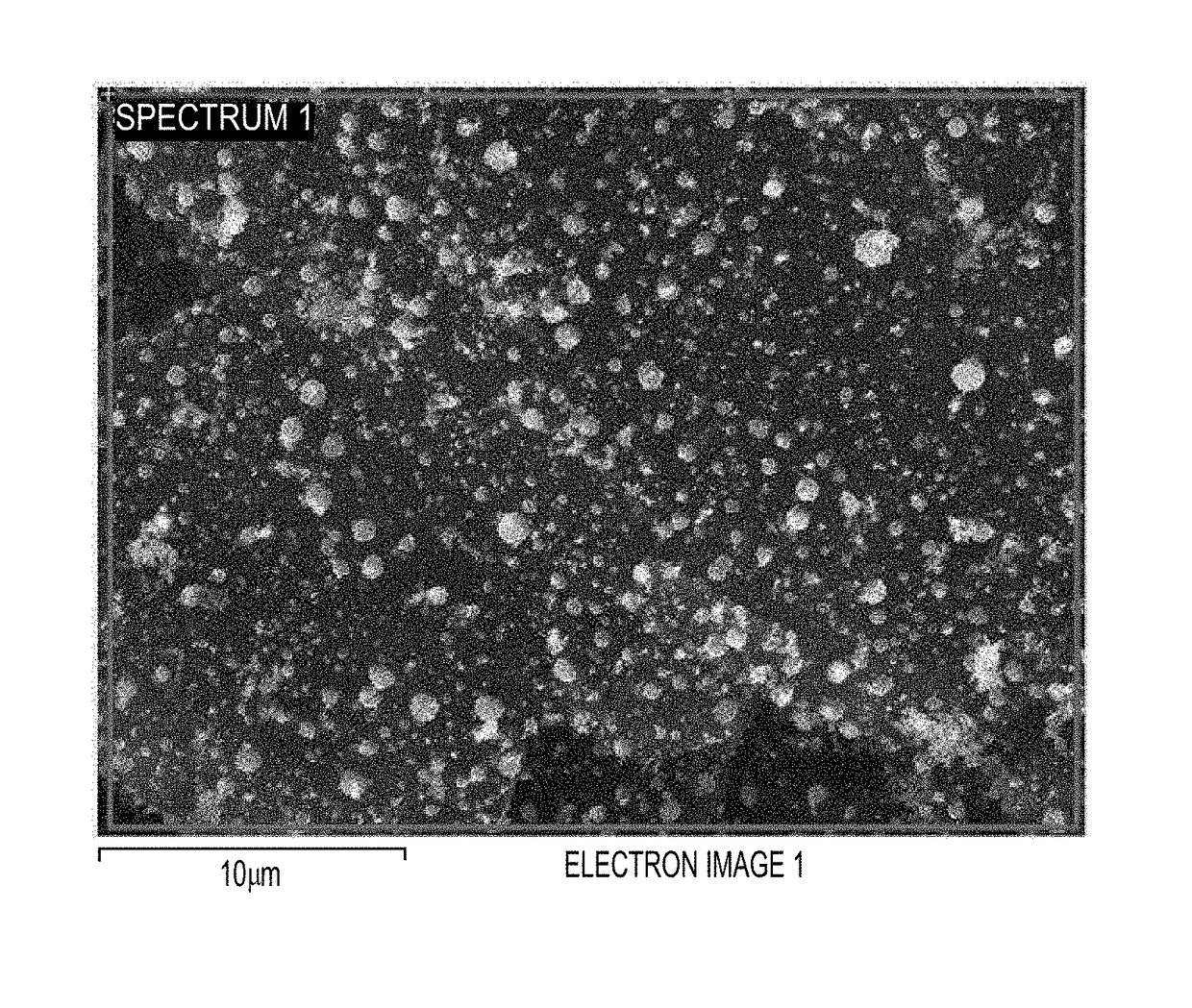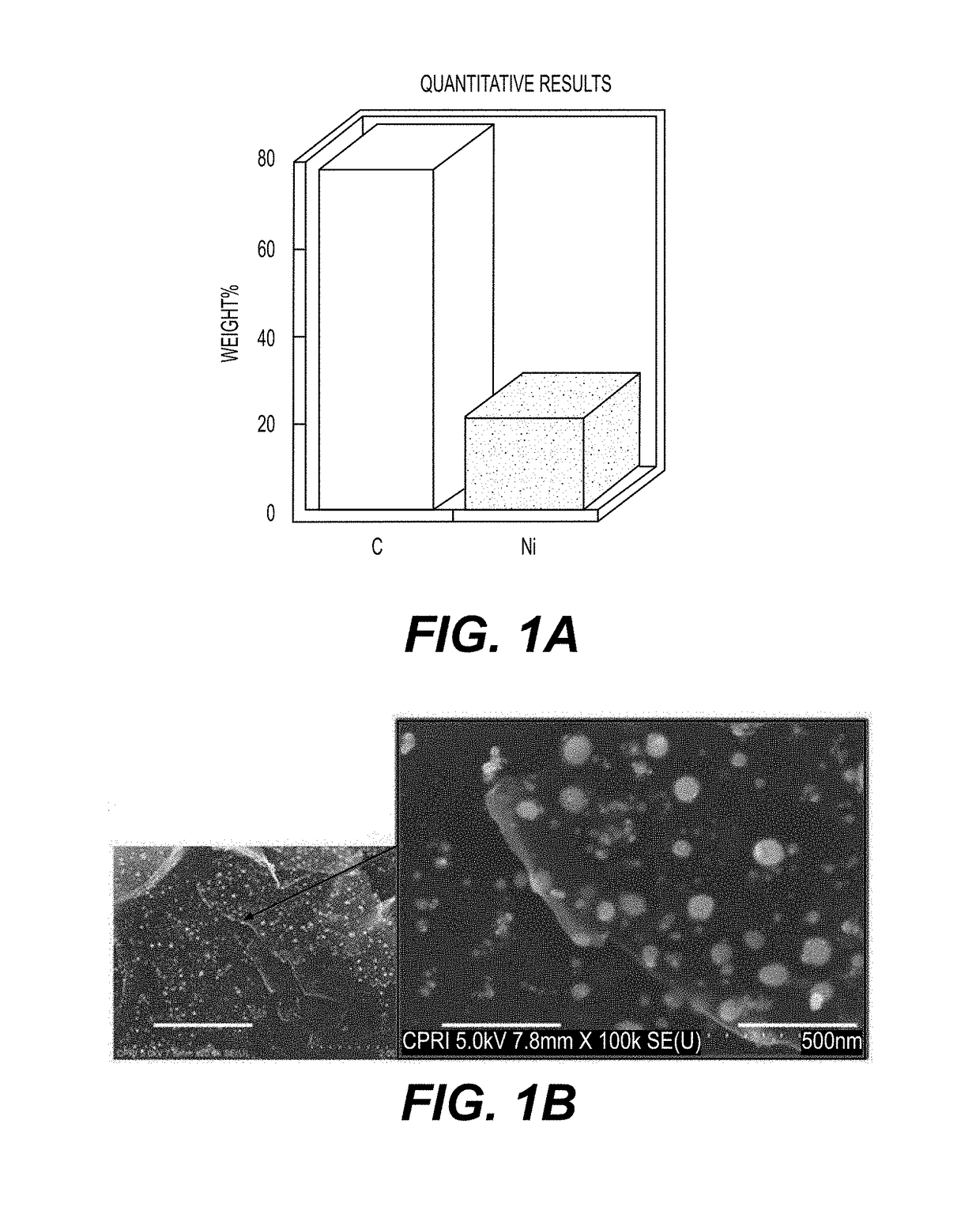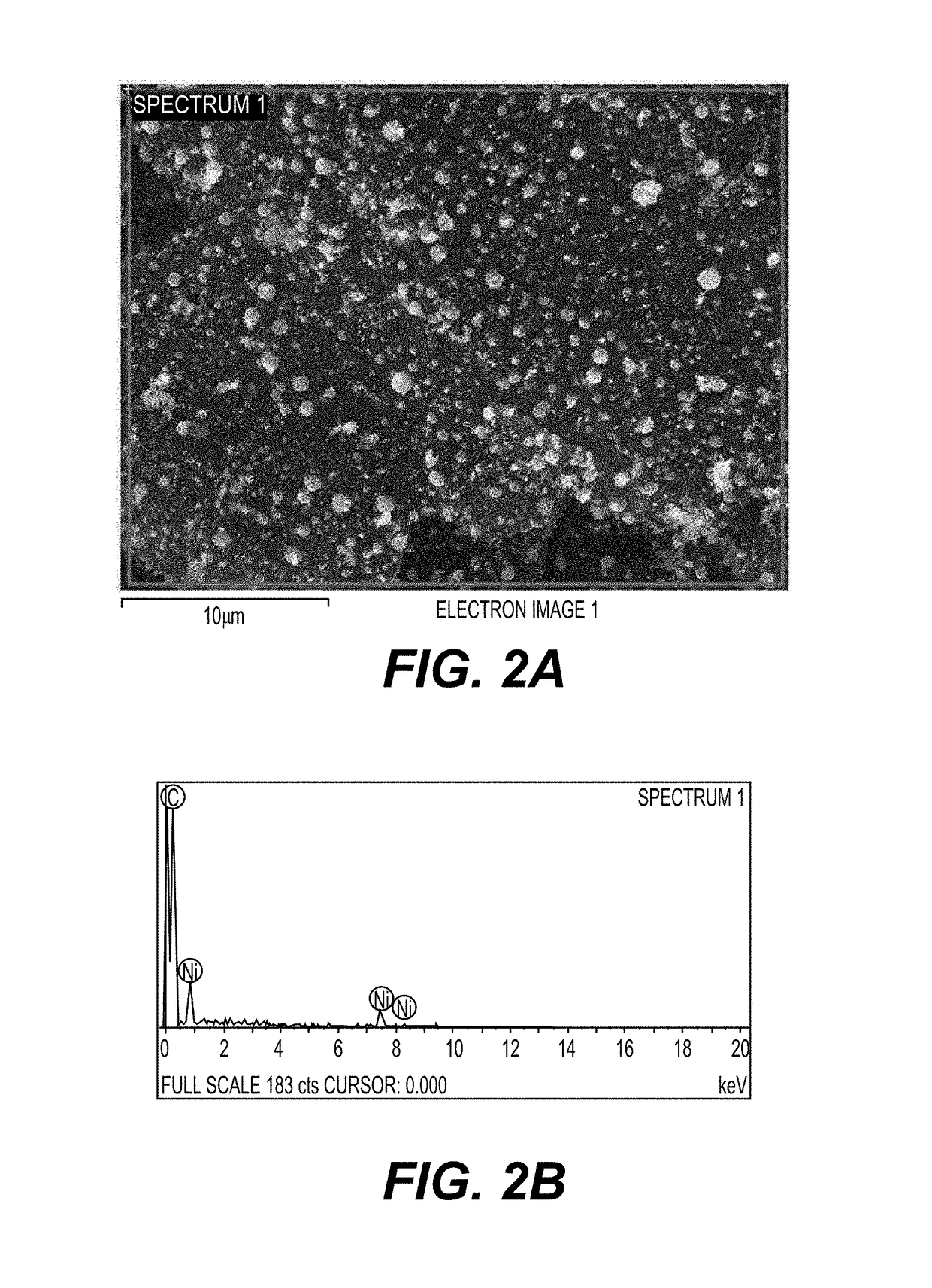Graphene-nano particle composite having nanoparticles crystallized therein at a high density
a nanoparticle and composite technology, applied in the field of graphenanoparticle composites, can solve the problems of difficult to form uniform composite structures, difficult to use a high specific surface area of single-layer, and not easy to peel off graphene in a solution, etc., to achieve excellent electric conductivity, excellent mechanical and electric characteristics
- Summary
- Abstract
- Description
- Claims
- Application Information
AI Technical Summary
Benefits of technology
Problems solved by technology
Method used
Image
Examples
example 1
Preparation and Characterization of Graphene-Nickel (Ni) Nanoparticle Composite
[0094]1-1. Preparation of Graphene-Ni Nanoparticle Composite
[0095]An increasing content (30% by weight, 40% by weight, and 50% by weight) of nickel (Ni) was mixed with graphene for 10 minutes using a mixing machine to prepare a source powder, and 30 lpm and 50 lpm of argon gas were injected as the central gas and the sheath gas into a radio-frequency thermal plasma device for performing a preparation process according to the present invention. Then, this experiment was performed without injecting a quenching gas.
[0096]Subsequently, a voltage of 17 kW was applied to a power source of a plasma torch to produce high-temperature thermal plasma, and a degree of a vacuum in the device was maintained at 500 torr before injection of a source powder. Then, the source powder mixed with graphene was injected into a radio-frequency thermal plasma reaction unit through an injection nozzle of the plasma producing elect...
example 2
Preparation and Characterization of Graphene-Silicon (Si) Nanoparticle Composite
[0120]2-1. Preparation of Graphene-Si Nanoparticle Composite
[0121]An increasing content (30% by weight, 40% by weight, and 50% by weight) of silicon (Si) was mixed with graphene for 10 minutes using a mixing machine to prepare a source powder, and a graphene-Si nanoparticle composite was prepared in the same manner as in Example 1-1. The results are shown in FIGS. 7 to 9.
[0122]2-2. FE-SEM Imaging
[0123]FIGS. 7A to 7F show the FE-SEM imaging results of the graphene-Si nanoparticle composite prepared in Example 2-1. The images shown in FIGS. 7A to 7F show the FE-SEM imaging results illustrating a change in density of Si bound to a surface of graphene when a content of Si was present at an increasing mixing ratio of 20% by weight, 40% by weight, and 60% by weight. From the FE-SEM imaging results, it could be seen that the Si nanopowder was fully fused with a surface of graphene, and that the density of the S...
example 3
Preparation and Characterization of Graphene-Silver (Ag) Nanoparticle Composite
[0130]3-1. Preparation of Graphene-Silver (Ag) Nanoparticle Composite
[0131]An increasing content (30% by weight, 40% by weight, and 50% by weight) of silver (Ag) was mixed with graphene for 10 minutes using a mixing machine to prepare a source powder, and a graphene-Ag nanoparticle composite was prepared in the same manner as in Example 1-1.
[0132]3-2. FE-SEM Imaging
[0133]FIGS. 10A and 10B show FE-SEM imaging results of the graphene-Ag nanoparticle composite prepared in Example 2-1. Referring to FIGS. 10A and 10B, it could be seen that silver particles are distributed at a high density on a surface of the graphene-Ag nanoparticle composite, which had a high particle diameter.
[0134]As described above, the present invention relates to a graphene-nanoparticle composite having a structure in which nanoparticles are crystallized at a high density in a surface of graphene to form chemical bonds. Therefore, the g...
PUM
| Property | Measurement | Unit |
|---|---|---|
| particle diameter | aaaaa | aaaaa |
| electric conductivity | aaaaa | aaaaa |
| electric power | aaaaa | aaaaa |
Abstract
Description
Claims
Application Information
 Login to View More
Login to View More - R&D
- Intellectual Property
- Life Sciences
- Materials
- Tech Scout
- Unparalleled Data Quality
- Higher Quality Content
- 60% Fewer Hallucinations
Browse by: Latest US Patents, China's latest patents, Technical Efficacy Thesaurus, Application Domain, Technology Topic, Popular Technical Reports.
© 2025 PatSnap. All rights reserved.Legal|Privacy policy|Modern Slavery Act Transparency Statement|Sitemap|About US| Contact US: help@patsnap.com



